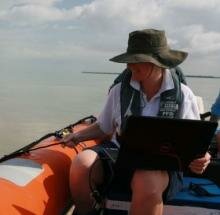Dr. Diane Purcell

My research interests can be broadly encompassed within microbial ecology. I began my research career at Imperial College in London during my undergraduate degree, where I had the opportunity to work within a research group investigating diurnal cycles in freshwater algae. After a year in that lab I was hooked on algae. Since then I have worked on numerous aspects of algal research, in a wide range of ecosystems, from freshwater to hot springs to rock crevices in Tibet to marine. The dynamic nature of adaptation that these primary producers employ to survive I find a constant source of discovery.
My present position is as a Postdoctoral Research Fellow with the Northern Australia Marine Research Alliance (NAMRA), based at the Arafura Timor Research Facility (ATRF) run by the Australian Institute of Marine Science (AIMS). The NAMRA is made up of a partnership of AIMS; Charles Darwin University (CDU); Northern Territory Government (NT); and Australian National University (ANU).
I was awarded my Ph.D. in 2010 for my work on investigating the control of algal bloom growth in reservoirs using ultrasound, which was industrially sponsored by four UK Water companies. This work extended my interested into applied algal research and the interaction between the effects that industry; population, and agriculture have on the environment and specifically in my work on providing water quality through the use of possibly green energy solutions for bloom removal.
I have extended my interests relating to environmental impact through a research project I undertook at the ANU and UC in Canberra, which looks at impacted and un-impacted effects of metals in sediment on biota biodiversity in a near shore environment. These projects have added to my experience to allow me to work effectively on the Darwin Harbour project I am writing-up and my new project on Rum Jungle, so that I can contribute to the scientific knowledge on this dynamic environment of Darwin Harbour and the surrounding area.
Selected publications
Peer-reviewed Publications
Denise Smythe-Wright, Aaron Daniel, Stephen Boswell, Diane Purcell, Mark Hartman, Susan Hartman, David Hydes. Available online 16 January 2014. Phytoplankton and pigment studies in the Bay of Biscay and English Channel Deep Sea Research Part II: Topical Studies in Oceanography, In Press, Corrected Proof.
Purcell, D., Jefferson, B., Parsons, S. A. (2013). The influence of ultrasound frequency and power, on the algal species Microcystis aeruginosa, Aphanizomenon flos-aquae, Scenedesmus subspicatus and Melosira sp. Environmental Technology, 34(17), 2477-2490. DOI: 10.1080/09593330.2013.773355
Purcell, D., Parsons, S.A. & Jefferson, B, Holden, S, Campbell, A, Wallen, A., Chipps, A, Holden, B, Ellingham A. (2013). Experiences of algal bloom control using green solutions barley straw and ultrasound, an industry perspective. Water and Environment Journal, 27(2), 148–156.
Purcell D., Sompong U., Chui Yim L., Barraclough T.G., Peerapornpisal Y. and Pointing S.B. (2007) The effects of temperature, pH and sulphide on the community structure of hyperthermophilic streamers in hot springs of northern Thailand. FEMS Microbiology Ecology, 60, 456–466.
Other Publications (policy reports, book chapters, popular media, other)
D. Purcell, M-N. Tsaloglou, M. Valiadi, D. Iglesias-Rodriguez, D. Smythe-Wright and M. Mowlem, (2014). Rapid detection of toxin-producing Dinoflagellate species using molecular tools. Oceans, Honolulu, Hawaii, USA, 23-28th February, 2014.
D. Purcell, E. Butler, M. Ellwood, B. Maher, An investigation of metals and primary producers in the macro-tidal oligotrophic environment of Darwin Harbour. AMSA, Canberra, 6-10 July, 2014.
D. Purcell, M-N. Tsaloglou, M. Valiadi, D. Iglesias-Rodriguez, D. Smythe-Wright and M. Mowlem, Identification of harmful Dinoflagellate species Karenia mikimotoi in the English Channel and the Scottish Coast using nucleic acid sequence-based amplification (NASBA). AMSA, Hobart, 2012.
Purcell D., Parsons S.A. and Jefferson B (2011). Effect of sonication on two natural field blooms of predominantly unicellular and filamentous green algae. British Phycological Society, Winter Meeting, Cardiff, January, 2011.
Purcell D., Parsons S.A. and Jefferson B (2009). The effects of multi-frequency ultrasonics on algal bloom. species, Scenedesmus subspicatus, Melosira sp. and Aphanizomenon flos aquae. The Phycologist, Volume 76; 9. 2009.
Purcell D., Parsons S.A. and Jefferson B (2008). Singing algae to sleep: Understanding the use of Ultrasound for Algal Control, The Phycologist, Volume 74; 20. 2008
Purcell D., Parsons S.A. and Jefferson B (2008). Singing algae to sleep: Understanding the use of Ultrasound for Algal Control. Proceedings from the WQTC, Cincinnati, Ohio, 16-20th November 2008; Volume 4, 2083.
Purcell, D., Rogoff, D and Rothschild, L.J. (2004). Natural UV damage and repair observed in Yellowstone extremophiles. AbSciCon 2004, NASA Ames Research Center, Moffett Field, CA. International Journal of Astrobiology, Volume 3, Supplement 1 (March): 61.
Purcell, D. and Rothschild, L. (2001). Naturally-occurring levels of hydrogen peroxide may induce mitosis in algae in nature. The Phycologist, Volume 60; 4. 2001.







